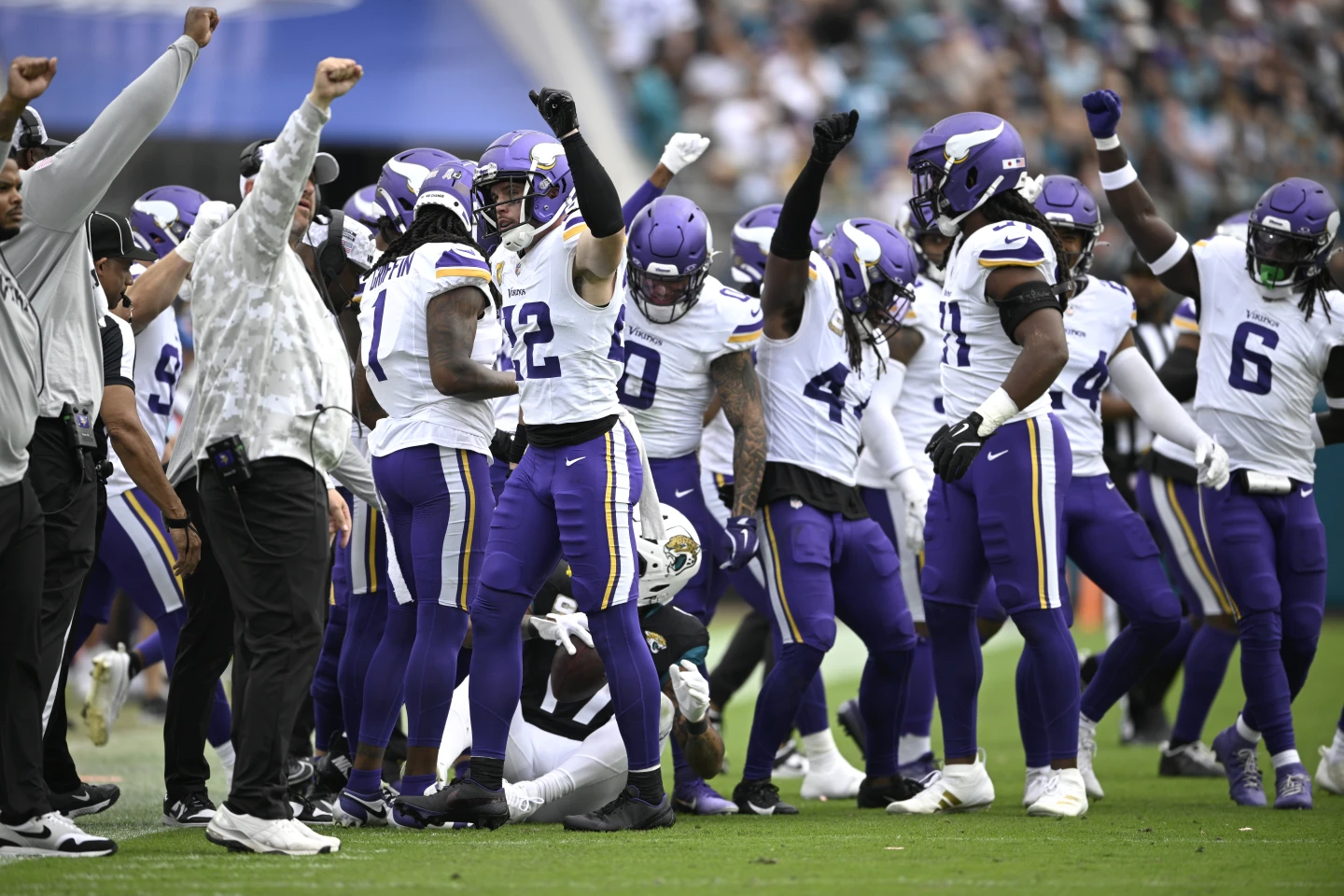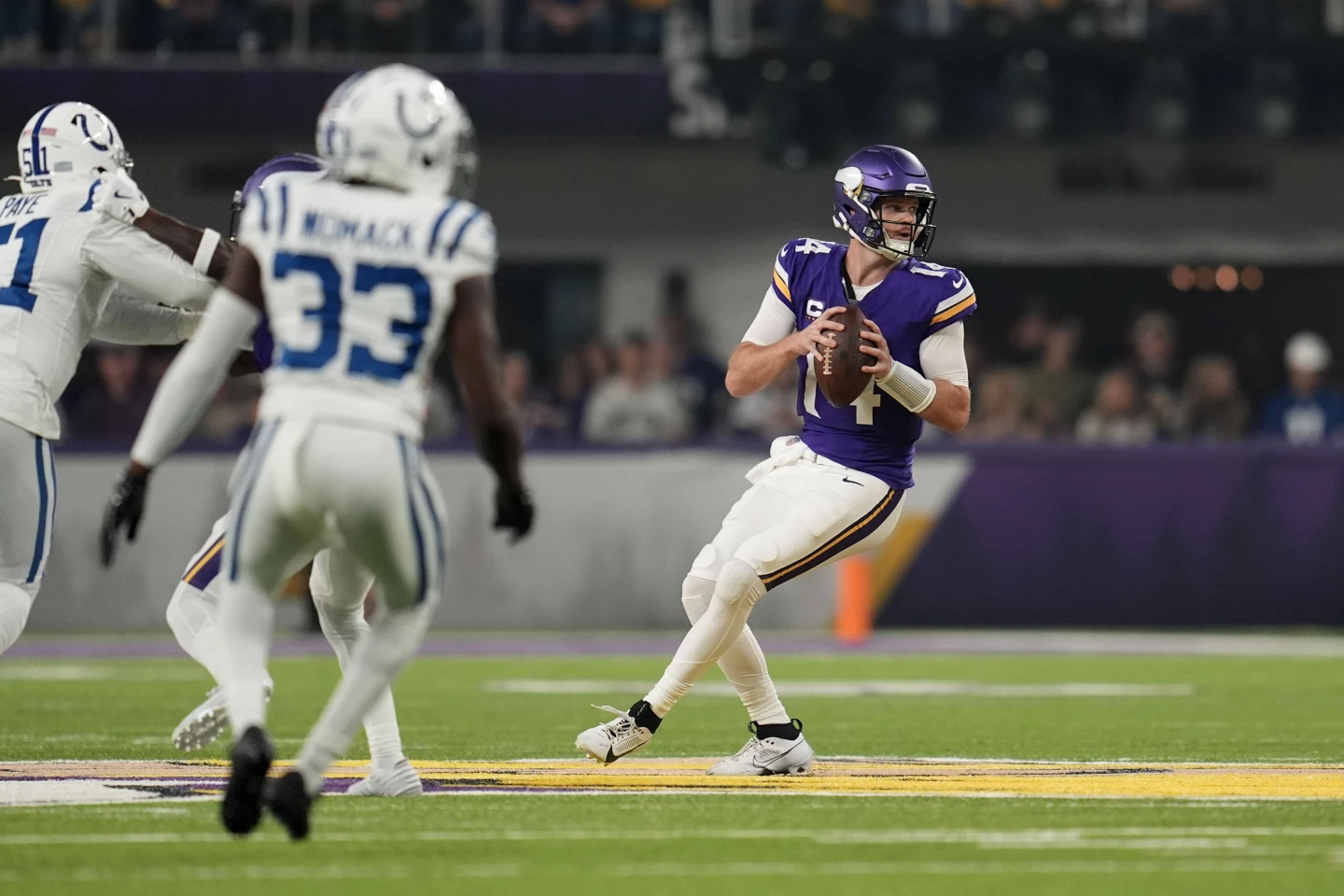The Minnesota Vikings’ season with Sam Darnold at quarterback has hit a rough patch, and there’s no time to slow down.
If they can limit the impact of these struggles over the next couple of months, they should have no problem making the playoffs. But Darnold’s recent turnovers have put the Vikings on a risky path.
Even though the Vikings won 12-7 against Jacksonville on Sunday to keep the second-best record in the NFC at 7-2, they began the new week with a major concern: Darnold’s interceptions. He threw three picks in the game against the Jaguars and has five in his last two games.
“I just think there’s times his confidence in guys is maximum to take some chances on some of those close plays,” said coach Kevin O’Connell.
Darnold, the third overall pick in the 2018 draft, has been with four NFL teams, mainly because of his ongoing struggles with turnovers at crucial moments. All three of his interceptions against Jacksonville had different circumstances, but two things were the same: Darnold was trying to throw to Justin Jefferson when the Vikings were deep in Jaguars territory.

“As space shrinks, you have to anticipate and put the ball in a place where you want to, or you’ve got to protect the football and progress the rhythm, and he knows that. We’ll go back to just emphasizing those things,” O’Connell said.
On the first pick, Jefferson was tightly covered on a slant route. The second interception was underthrown in the middle of the end zone.
The third interception started off looking promising, but instead of placing the ball toward the front pylon, where the worst-case scenario was it going out of bounds, or to the back corner, where the defense couldn’t reach it, Darnold left the throw hanging near the goal line.
Those three mistakes marred an otherwise strong performance by the Vikings, who outgained the Jaguars 402-143 in total yards. Despite the turnovers, O’Connell wasn’t shaken when asked if he thought Darnold needed a confidence boost.
“On the flight home, spending some time talking to him, he’s in a great head space. He’s ready to go to work,” O’Connell said. “He’s ready to really diagnose exactly the what and the why of what that took place and how he can be better.”
